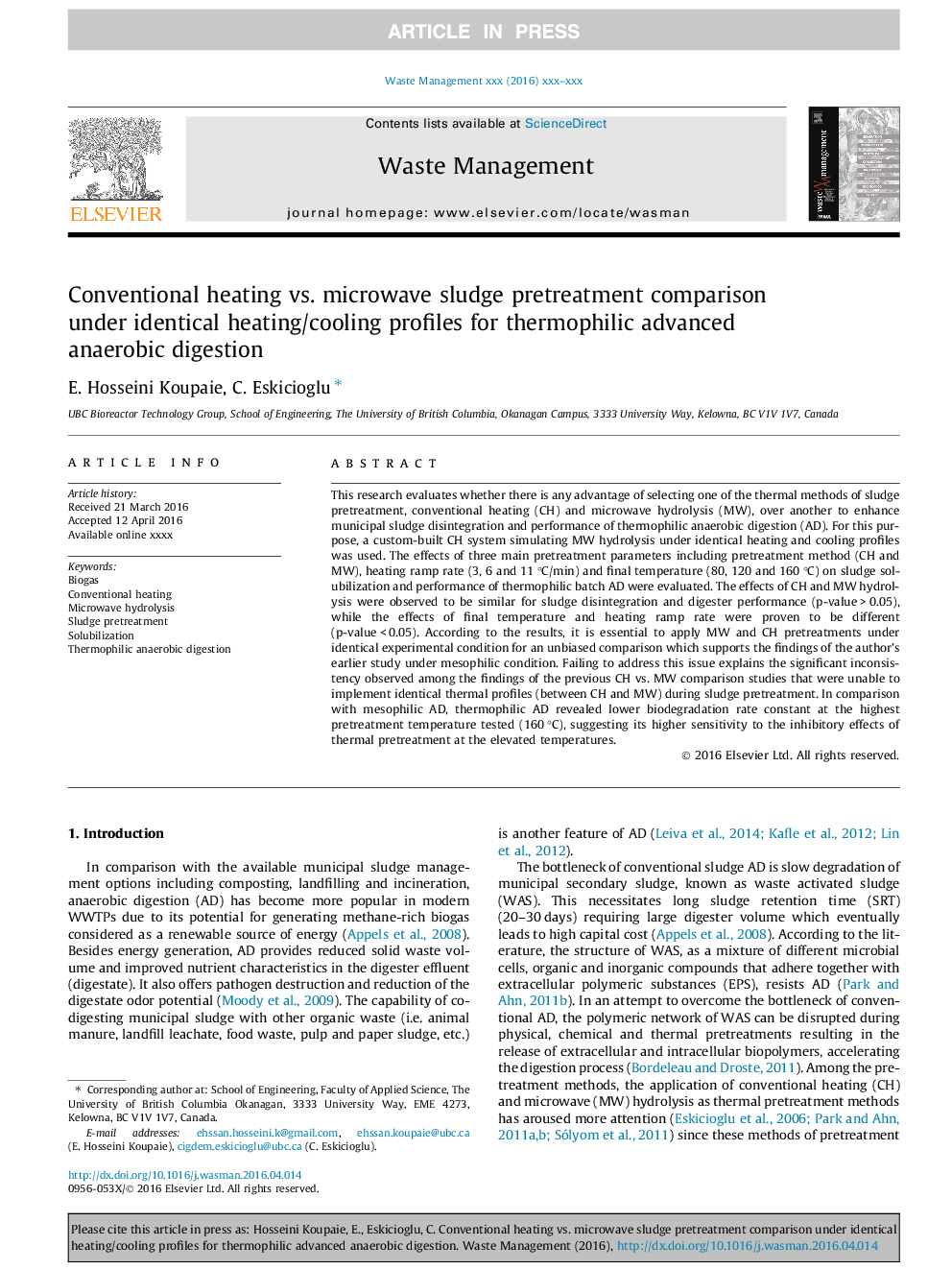| Article ID | Journal | Published Year | Pages | File Type |
|---|---|---|---|---|
| 6353579 | Waste Management | 2016 | 14 Pages |
Abstract
This research evaluates whether there is any advantage of selecting one of the thermal methods of sludge pretreatment, conventional heating (CH) and microwave hydrolysis (MW), over another to enhance municipal sludge disintegration and performance of thermophilic anaerobic digestion (AD). For this purpose, a custom-built CH system simulating MW hydrolysis under identical heating and cooling profiles was used. The effects of three main pretreatment parameters including pretreatment method (CH and MW), heating ramp rate (3, 6 and 11 °C/min) and final temperature (80, 120 and 160 °C) on sludge solubilization and performance of thermophilic batch AD were evaluated. The effects of CH and MW hydrolysis were observed to be similar for sludge disintegration and digester performance (p-value > 0.05), while the effects of final temperature and heating ramp rate were proven to be different (p-value < 0.05). According to the results, it is essential to apply MW and CH pretreatments under identical experimental condition for an unbiased comparison which supports the findings of the author's earlier study under mesophilic condition. Failing to address this issue explains the significant inconsistency observed among the findings of the previous CH vs. MW comparison studies that were unable to implement identical thermal profiles (between CH and MW) during sludge pretreatment. In comparison with mesophilic AD, thermophilic AD revealed lower biodegradation rate constant at the highest pretreatment temperature tested (160 °C), suggesting its higher sensitivity to the inhibitory effects of thermal pretreatment at the elevated temperatures.
Keywords
Related Topics
Physical Sciences and Engineering
Earth and Planetary Sciences
Geotechnical Engineering and Engineering Geology
Authors
E. Hosseini Koupaie, C. Eskicioglu,
